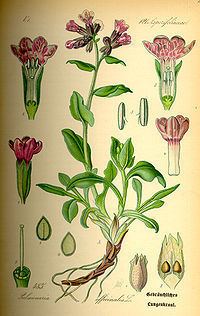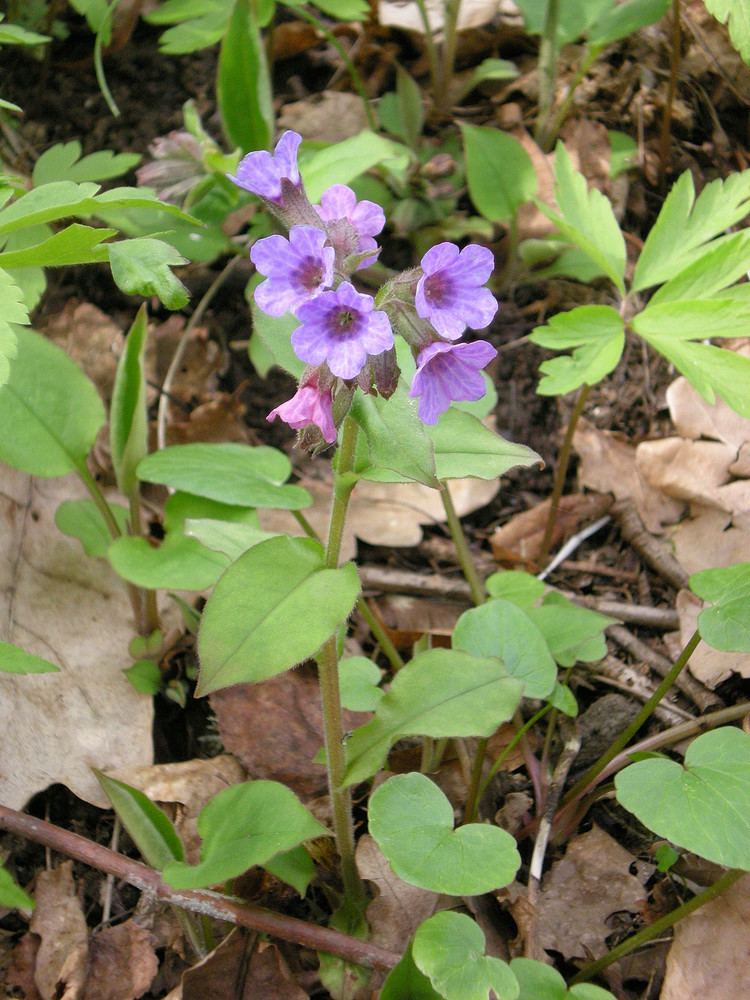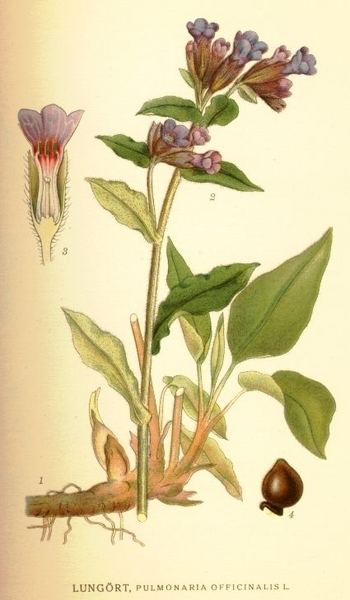Rank Species | Higher classification Pulmonaria | |
 | ||
Similar Pulmonaria, Tussilago, Cowslip, Verbascum densiflorum, Anemone hepatica | ||
Pulmonaria officinalis with translation text
Pulmonaria officinalis, common names lungwort, common lungwort, Mary's tears or Our Lady's milk drops, is a herbaceous rhizomatous evergreen perennial plant of the genus Pulmonaria, belonging to the family Boraginaceae
Contents
- Pulmonaria officinalis with translation text
- Lungwort pulmonaria officinalis our lady s milk drops 2014 04 05
- Etymology
- Description
- Medicinal uses
- Distribution
- Habitat
- References

Lungwort pulmonaria officinalis our lady s milk drops 2014 04 05
Etymology

The genus name comes from the Latin Pulmoa meaning lung and was first used by Leonhart Fuchs (1501 – 1566), a German physician and one of the three founding fathers of botany. The species has been named officinalis by Carl Linnaeus for the medical properties of these plants, used since the Middle Ages to treat coughs and diseases of the chest, because of the signature doctrin where Christian doctors believed that plants similar to any bodypart could be used to treat illnesses in this part since god put his signature in the plant to guide mankind.
Description

The basal leaves are green, cordate, more or less elongated and pointed and always with rounded and often sharply defined white or pale green patches. The upper surface of the leaves has tiny bumps and it is quite hairy. The leaves of this host plant are eaten by the caterpillars of the moth Ethmia pusiella. In spring, the plant produces small bunches of flowers. The 5-petals flowers are red or pink at first, later turn to blue-purple during the anthesis, by changing the pH value inside of the petals. As a matter of fact the flowers contain a dye that belongs to the anthocyanins and change the color from red (acidic) to blue (alkaline). Pulmonaria officinalis is diploid and has the chromosome number 2n = 14. Flowering period extends from March through May and the seeds ripen from May to June. Pollination is granted by insects (entomophily) - mainly bees, bumblebees and butterflies - the spread of seeds over ants.
Medicinal uses

The plant has been cultivated for centuries as a medicinal herb, the ovate spotted leaves held to be representative of diseased lungs, following the Doctrine of Signatures.
Distribution

This native species is perhaps the most widespread plant in Europe. It is distributed west in the Ardennes up to the Netherlands, Denmark and central Sweden. It is missing in Norway and it is only naturalized in the British Isles. It reaches central Russia and the Caucasus and it occurs in the Balkans and in northern to central Italy.
Habitat
It grows in deciduous and beech mixed forests from the lowlands to the mountains. It prefers fresh and shady areas, nutrient-rich and mostly calcareous, stony or pure clay loam soils, at an altitude of 0–1,500 metres (0–4,921 ft) above sea level.
